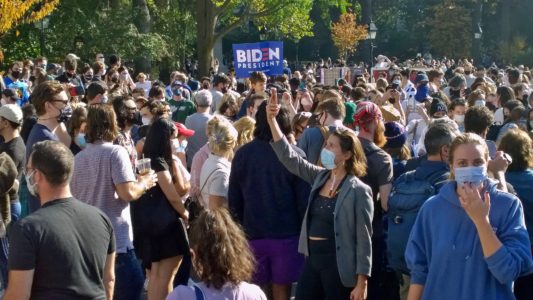Disappointment and frustration characterize the reaction to the U.S. Census Bureaus refusal to adjust its population counts for New York City, which local officials contend understated the citys actual population by at least 200,000.
The Census Bureau delivered the bad news in time for April Fools Day, April 1, but the result is clearly anything but a joke, as it affects the amount of federal money flowing into the city for the next decade for a laundry list of uses, from schools to hospitals. Census counts also affect representation, but officials knew that even if the formal appeal filed by the city in August, 2011, had succeeded, it could not have changed the allocation of representation, which has already been completed.
Its certainly going to hurt New York City because many grants that are received are based on population, noted City Councilmember Vincent Gentile, who represents both Bay Ridge and Bensonhurst, areas of the city cited by officials as being radically undercounted. Its just a sad outcome and its frustrating, because there seems to be no remedy.
According to a spokesperson for the Department of City Planning (DCP), which handled the Census appeal, DCP identified clear anomalies in the census count in portions of Brooklyn and Queens that revealed significant shortcomings in the Census Bureaus procedures, resulting in neighborhoods of high growth being undercounted.
According to the 2010 Census, Brooklyn grew by only 1.6 percent, or 39,374 people, over the past decade from 2,465,326 to 2,504,700. But, city number crunchers pointed to faulty enumeration in a single office as leading to the undercount in both Brooklyn and Queens.
In Brooklyn, that officewhich counted a significant number of vacant housing units in areas where locals say there are few or no vacancies — handled communities in the southwestern part of the borough.
Altogether, in Brooklyn, the Census identified an increase of over 33,000 in the number of vacant units, up 66.4 percent compared to 10 years earlier, with 30 Census tracts in the borough recorded as having a 500 percent or greater increase in the number of vacancies, and 120 having a 200 to 499 percent increase in vacancies.
The increase in vacancies in the particular local office in southwest Brooklyn identified by the city as being problematic was a whopping 214 percent, in direct contradiction with a 2008 Housing and Vacancy Survey which identified 9,587 vacant units, compared to the 25,501 identified in the 2010 Census.
The Census Bureaus findings are in direct contradiction to the anecdotal evidence, said Gentile. All you have to do is walk around. On almost every block, the vacancy rate is almost non-existent.
Nonetheless, the DCP spokesperson said, The Census Bureaus examination of the addresses City Planning submitted did not reveal errors admissible under the process previously put in place by the federal bureau, which only considers issues concerning geographic boundaries and the processing of data already collected in the Census enumeration. The Census Bureau does not change numbers produced from an enumeration, unless the error falls into those categories.
We are disappointed by the outcome of the resolution processclearly communities in Brooklyn were undercounted, said Mark Zustovich, a spokesperson for Borough President Marty Markowitz. The city and this office will continue to work with the Census Bureau to ensure that enumeration procedures are improved and that Brooklyn and the other boroughs are more accurately counted in 2020.
State Senator Marty Golden agreed, noting, The United States Census Bureau has failed locally to provide an accurate count of our population. It is a shame that they will not adjust the undercount that will negatively affect our city and state financially.
 Locals weigh in after Biden declares victory
Locals weigh in after Biden declares victory